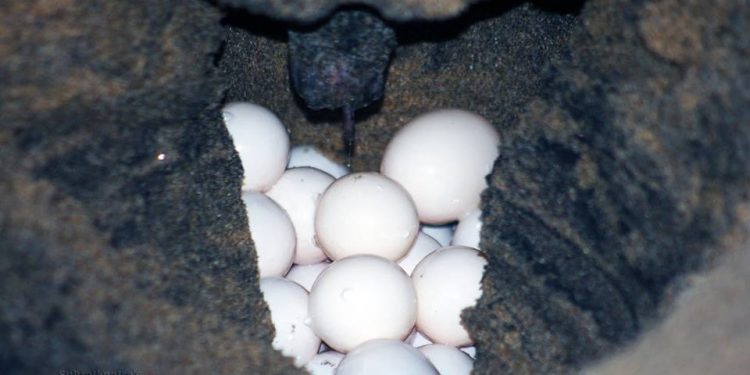Kendrapara: With the atmosphere turning favourable for Olive Ridley marine turtles to lay eggs en masse on the beaches of Gahirmatha Marine Sanctuary (GMS), around 15,000 female turtles laid eggs here Tuesday night.
Forest personnel expect that the mass nesting of the endangered marine species is going to commence anytime from now on Nasi II beach, the favourite nesting spot and the largest rookery of the species, Srirampada Arabinda Mishra, ACF-cum-Range-In-Charge of GMS, said.
Forest personnel are now waiting with their fingers crossed, hoping that the mass nesting would commence at GMS soon.
The forest personnel have taken all steps to provide a congenial atmosphere to Olive Ridleys, Mishra said.
Nesting of Olive Ridley turtles had started some days ago on the beaches of Nasi-II island inside GMS, and thousands of Olive Ridleys came ashore for laying eggs on Nasi-II and Nasi-I beaches.
Over last 24 hours, around 15,000 Olive Ridleys laid eggs on Nasi-II beach, Mishra said.
If the nesting continues, then there is every possibility that the much awaited arribada (a Spanish term for mass nesting) would commence any time at the beach, the ACF said.
The southern wind which is favourable for the turtles to lay eggs has intensified. Forest personnel have divided the Nasi-II beach into 18 segments for counting turtle nests. Around 40 Forest personnel are on Nasi II beach, the ACF said.
Female Olive Ridley turtles lay 100 to 120 eggs at one go. The female turtles arrive on the coast in the dead of night. They lay eggs at around midnight in 45 cm deep pits, which they dig with their rear flippers.
After laying the eggs, the female turtles cover the nests with sand and return to the sea in a zigzag manner to confuse predators about the location of the nests.
Hatchlings emerge from the eggs after 45 to 60 days and find their way to the sea. It is one of nature’s rare phenomena in which babies grow without their mother.
The endangered Olive Ridley turtles are protected under Schedule 1 of the Wildlife Protection Act, 1972.
During the breeding season, males and females migrate from their feeding grounds to their breeding ground and mating occurs offshore.
The endangered species rarely turn up in such large numbers anywhere else on the planet, added official sources.
The mortality rate of the species is so high that only one egg out of every 1,000 eggs laid ultimately hatches, and the hatchlings survive to become an adult.
Around 6.68 lakh Olive Ridley turtles laid eggs on the Nasi-II beach from March 7 to 12, 2018.
Meanwhile, sea patrolling has been intensified to prevent trawlers from endangering the turtles.
Around 90 fishing vessels, including mechanised fishing boats, were seized and 730 fishermen were arrested by Forest personnel after a fishing ban was imposed November 1, officials said.
PNN






































